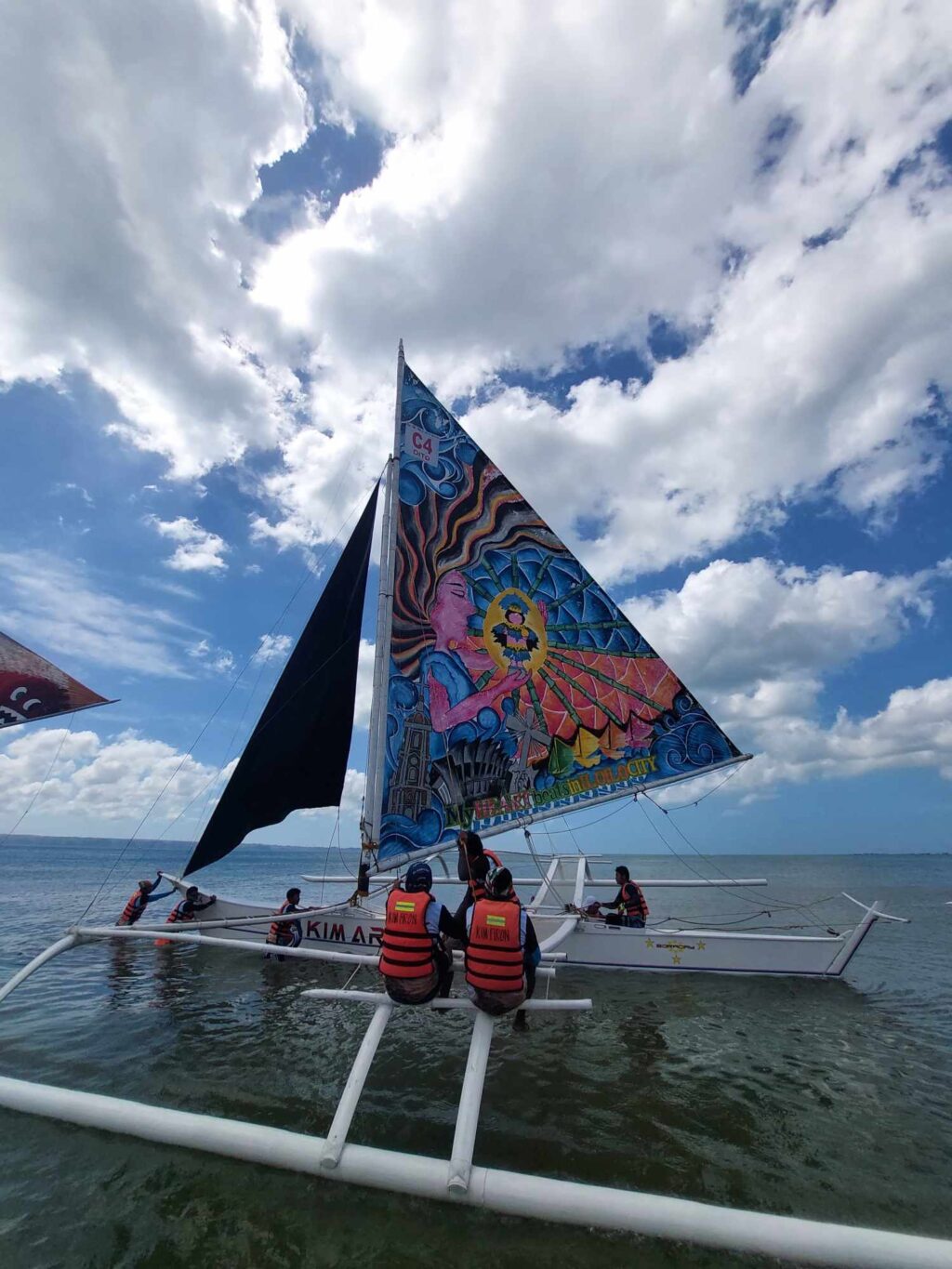Boat as a metaphor for our maritime culture

Photo shows a participant in Paraw Regatta.
“The story of our nation began with a boat.”
This was the opening statement of Historian Xiao Chua lifted from an essay titled “The boat as a metaphor of nation” on our ancestors’ maritime culture which he shared during a symposium held at the Asian Institute of Maritime Studies (AIMS) last year as part of the National Seafarers’ Day celebration.
He noted that a Filipino artifact that exhibited the country’s maritime history is the Balangay which is one of the most ancient boats in the Philippines that used celestial navigation.
Known as the oldest watercraft found in the Philippines, it is evidence of early Filipino craftsmanship and their seamanship skills during pre-colonial times.
It is a type of lashed-lug boat built by joining planks edge-to-edge using pins, dowels, and fiber lashings. The boats were finely manufactured without any blueprints and were taught to be made from one generation to another.
The Filipino balangay was used largely as trading ships up until the colonial era.
It was first mentioned as balangai or balanghai in the 16th century chronicles of Italian scholar Antonio Pigafetta who joined the expedition to the Spice Islands led by explorer Ferdinand Magellan.
It was navigated by the old method used by the ancient mariners—steering by the sun, the stars, the wind, cloud formations, wave patterns and bird migrations.
From balangay came the word “barangay” which is the basic political community in the Philippines.
Chua noted that Many Filipino epics narrate how souls go to the next life, aboard boats, pass through the rivers and seas.
Known as the “ship-of-the-dead”, the Manunggul Jar is a burial container that represents the journey of the soul to the afterlife which is closely associated to our maritime culture.
The jar dates from 890–710 B.C. and was excavated from a Neolithic burial site in the Manunggul cave of the Tabon Caves at Lipuun Point in Palawan.
Chua explained how the Manunggul jar shows the interaction between the Filipinos’ maritime culture and their ancestors’ religious beliefs.
The upper part of the Manunggul jar, as well as the cover, is carved with curvilinear scroll designs (reminiscent of waves on the sea) which are painted with hematite. At the top handle of its cover, there are two human figures in a boat representing the voyage to the afterlife.
The front figure is the deceased man with hands crossed on his chest which was a widespread practice in the Philippines when arranging the corpse. The rear figure, on the other hand, is holding a steering paddle directing the boat and soul of the man to the afterlife.
Early Filipinos believed that a man is composed of a body, a life force called ginhawa, and a kaluluwa (soul) which explains why the design of the cover of the Manunggul Jar featurs three faces – the soul, the boatman, and the boat itself.
The kaluluwa, after death, can return to earth to exist in nature and guide their descendants.
Filipino ancestors respected nature as they believe that even things from nature have souls and lives of their own.
The Manunggul jar also depicted the Filipino values of respect for one’s soul, compassion, nationalism and faith.
Sailors competed during the 51st Paraw Regatta Festival, the longest and biggest sailing competition in Southeast Asia, recently held at Arevalo, Iloilo City last March 3, 2024.
The paraw is a small boat with two stabilizers and was widely used as a traditional watercraft for travel and trade during ancient times. The present-day paraw managed to maintain its original design from the sailboats of the first settlers from Borneo who were in search of a peaceful home in 2012 A.D.
Surviving the centuries, the paraws have become a vital part of Filipino seafaring life. Up to this day, it is still being used as a means of transport as well as a source of livelihood.
Initiated in 1973, the regatta honors the double outrigger boats for the skills of sailors and a crucial element of early Ilonggo history.
Chua noted that José Rizal once predicted in an essay titled ‘The Philippines Within a Century’ that if a new generation of Filipinos were to have a second look at our maritime culture, we might be a great nation.
“Perhaps the people will revive their maritime and commercial activities for which the islanders have a natural aptitude, and free once more, like the bird that leaves his cage, like the flower that returns to the open air, they will discover their good old qualities which they are losing little by little and again become lovers of peace, gay, lively, smiling, hospitable, and fearless,” Rizal said.
The country’s maritime culture is reflected in its status as one of largest supplier of seafarers as it is estimated that there is one Filipino seafarer for every four to five crewmembers on board a vessel at any time.
Chua added: “If in a boat, the concept of barangay as a community that eventually became the bayan began, we continue to have a metaphor for our country as ‘The Ship of State’.’”
We are one nation. We are all just in one boat.
(Atty. Dennis R. Gorecho heads the seafarers’ division of the Sapalo Velez Bundang Bulilan law offices. For comments, e-mail [email protected], or call 09175025808 or 09088665786.)
ALSO READ
Flowers for Lolas: Remembering the 1945 Rape of Manila
Fishers as victims of human trafficking
Execution bond in the Magna Carta for Filipino Seafarers is anti-labor and unconstitutional
Magna carta should expand, and not limit, the seafarers’ rights
Disclaimer: The comments uploaded on this site do not necessarily represent or reflect the views of management and owner of Cebudailynews. We reserve the right to exclude comments that we deem to be inconsistent with our editorial standards.
